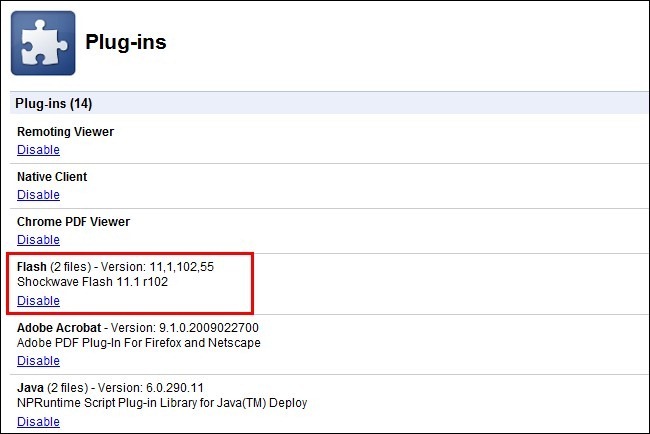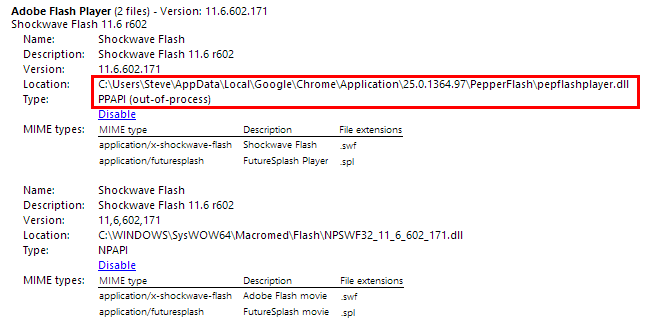-
-
products
-
resources
-
support
-
company
-
Fix Adobe Flash Problems in Google Chrome
By Steve Horton March 07, 2013adobe, chrome, flash, youtube40 CommentsMy Flash videos just aren’t working right in Google Chrome. How do I fix it?
Flash is an application made by Adobe that displays movies, games, or other content within a web browser. It’s an old web standard that’s slowly being phased out by HTML5 — however, many websites still use Flash plugins for videos, games, and tools. Google Chrome is a browser made by, well, Google (you know, the search engine giant), and it has nearly half of the current marketshare, including support for themes, extensions and HTML5. While Chrome scores higher on browser tests than its competitors, it does have some known issues with Flash — and here’s how to fix them.
First off, issues with Flash games and the such — those can’t be fixed. Chrome and Flash games don’t play well together, for whatever reason — even if Flash is working perfectly fine — so for those, you should definitely go to Mozilla Firefox or another browser to enjoy some flash gaming. For your normal Flash video issues — like lagging and crashing — here’s where you need to go.
First, type about:plugins in your Chrome address bar and press Enter to view what plugins you have installed and are running.

This is where the Flash plugins are stored.How To Stop The Plugin Conflict
Search for Flash in the plugins list and then check if it says (2 files) in parenthesis beside it.
If it says two files, that means two different installations of Flash — one on your system and one just for the Chrome installation — are conflicting, and that’s where your problem lies.
Click the + sign next to Details and use the Location tags to determine where each installation is located.
The System installation will have something starting with C:\Windows and the Chrome installation will have something starting with C:\Users — delete the latter and restart Chrome. Videos should play much more smoothly in your Chrome browser.

The highlighted plugin is the installation for Chrome.- Click Start (Windows Key + X in Windows 8)
- Click Search
- Type Flash Player
- Open the application
- Click the Advanced tab
- Change the update settings to Allow Adobe to Install Updates
If Issues Persist
First, re-activate the Chrome plugin and turn off the operating system plugin. (The opposite of the steps above.)
If that doesn’t fix your issue, deactivate each of your extensions and start Chrome again — an easy way to go about this is to open up an incognito window with extensions disabled. To open up an incognito window, click Chrome’s Menu icon and select Open Incognito Window from the drop down box. By default, incognito starts without extensions. Go to a flash-based page and see if you have any issues. If you don’t, good job — one of your extensions is causing the problem.To solve this, open up your list of Extensions and one by one, re-enable them while viewing how they effect your Flash performance. To open the list of extensions, open your menu once more, hover over Tools and click Extensions. When you’ve determined which one has been causing you all this trouble, delete or disable it.
Was this post helpful?YesNoFree Driver Updates
Update your drivers in less than 2 minutes to enjoy better PC performance - Free.
Free Driver Updates
Update your drivers in less than 2 minutes to enjoy better
PC performance - Free.
Didn't find your answer?Ask a question to our community of experts from around the world and receive an answer in no time at all.most relevant recent articles Pin It on Pinterest